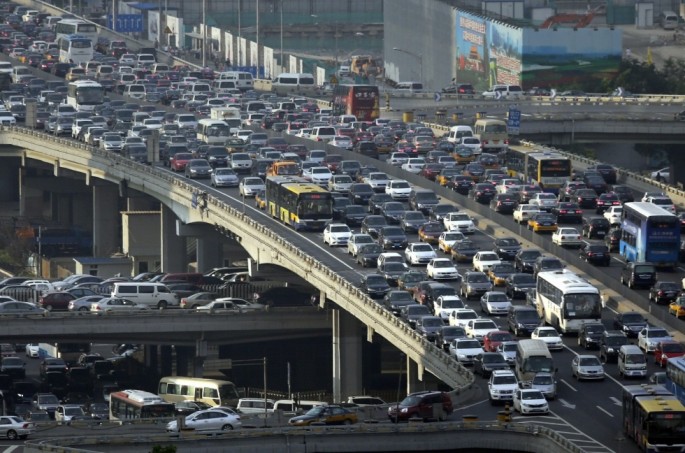Subsequent to the release of a Shanghai Urban-Rural Construction and Transportation Development Research Institute report on Monday, the residents of Shanghai can expect the introduction of a congestion monitoring system around April this year.
The announcement was made in light of an anticipated increase in road traffic for 2015.
According to He Cheng, director of the institute's information center, the institute will use its own database to gauge the amount of congestion in Shanghai. He said that the database will form the basis of the congestion monitoring system, which will primarily be used to alert the public when the congestion situation becomes "serious." "Appropriate" measures will be implemented when the system indicates that the public must be informed.
The institute's vice president, Xue Meigen, explained to reporters: "With more cars on the roads and major construction projects like the Beiheng Passage and renovation of Yan'an Road E. Tunnel, the situation will worsen in 2015."
Xue said that, in addition to morning and evening peak congestion periods, an afternoon traffic jam is an ongoing concern that has been brought to the body's attention through the data collated from last year.
Average speeds were also a key aspect of the report's findings. The vice president said that, over the course of 2015, Shanghai's drivers can expect "the average speed on more than 12 percent of the city's expressways" to fall below "40 kilometers per hour during the morning rush hour." The report showed that the proportion was approximately 10 percent last year.
Meanwhile, the Shanghai Daily extrapolated on Tuesday and "assumed that higher speeds are achieved on 90 percent of the city's expressways."
The origin of vehicles is also a major concern for the institute, even though details were not provided on Monday. Approximately 33 percent of the vehicles on the city's expressways are from outside of Shanghai during off-peak periods--they are banned during the morning and afternoon rush hours--and the institute stated that further measures will be introduced in the future to restrict such drivers.
The report revealed that there were nearly 2.2 million cars with Shanghai plates at the end of 2014, which represents an increase of 194,000 from the same time frame in the previous year.



























